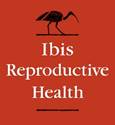|
|
|
|
Volume 14, Number 3 |
December 2017 |
|
|

The female condom is an important receptive-partner controlled contraceptive method that also protects against STI and HIV transmission. In the United States, the female condom has been classified as a grade III medical device, as compared to the male condom, which is classified as level II. Grade III devices require more testing and scrutiny
before being approved for market, thus making the introduction of new female condom products more costly and time consuming for manufacturers. There is currently only one brand of female condom available in the United States, the FC2, manufactured by Veru Healthcare.
For years, advocates in the United States, like the National Female Condom Coalition (NFCC), have recommended that the female condom be reclassified at a level equivalent to that of the male condom.
In early December, the US FDA published a proposed rule that would make such a classification change, rename the device from "female condom" to "single-use internal condom," and include a new indication for anal use. These proposed changes are essential to expand the US market for new internal condom options, and make it clear that this device is safe for use by anyone regardless of their gender.
Changing the device name from "female" to "internal" condom reflects terminology already
in use by many public health professionals and the reality that individuals who do not identify
as female also use the internal condom. The addition of an indication for anal use in addition
to vaginal use similarly reflects that the device has long been used by people of all genders
as a safe and effective method of protection during anal sex.
The FDA is accepting comments on the proposed changes until February 2, 2018. You can
submit a comment through the FDA online portal, or subscribe to the NFCC email list to
receive updates about additional opportunities to show your support and stay current on the
progress of the potential changes.
|
Updated listings for ongoing and completed research on female condoms and cervical
barriers are current through December 15, 2017 and now available on the CBAS Research
page. Information about new ongoing and published research since the last newsletter
follows below.
Ongoing research
A pilot functional performance study of the Wondaleaf condom
In 2017, MatCH Research Unit (MRU), with funding from Twin Catalyst Malaysia, conducted a
study of the Wondaleaf female condom in Durban, South Africa. The primary aim of the
randomized controlled study was to evaluate the Wondaleaf's functional performance, as
well as to evaluate acceptability and safety. The study enrolled up to 55 women who were
asked to use five FC2 and five Wondaleaf female condoms and attend two follow-up visits
after one month of study enrollment. Safety, acceptability, and function data were obtained
at each visit. Analysis of the data is currently being finalized.
Completed research
Beksinska M, Greener R, Smit J, Maphumulo B, Mphili N, Kilbourne-Brook M, Coffey
PS. A Randomized Crossover Study Evaluating the Use and Acceptability of the
SILCS Diaphragm Compared to Vaginal Applicators for Vaginal Gel Delivery. AIDS
and Behavior. 2017 Oct 9. doi: 10.1007/s10461-017-1913-4. [Epub ahead of print]
Results of a randomized crossover study of the SILCS diaphragm as compared to a vaginal
applicator for delivery of vaginal gel were recently published in the AIDS and Behavior
journal. One hundred and fifteen women were enrolled in the study and used both methods
five times. There was no significant difference in acceptability between methods, but usage
of the SILCS diaphragm resulted in less experience of gel leakage than with the vaginal
applicator. The full abstract is included in the CBAS completed research listings, and the full text of the article can be found at AIDS and Behavior.
|

Mission of CBAS
Established in 2004, the Cervical Barrier Advancement Society (CBAS) aims to raise the profile of cervical barrier methods, including diaphragms, caps, female condoms, and other devices, and to share the latest news and resources related to these methods.
CBAS contact information
For more information, contact Laura Fix, CBAS Executive Director, at info@cervicalbarriers.org.
CBAS is coordinated by Ibis Reproductive Health.

www.ibisreproductivehealth.org
|
|
|
|
|
Note: We are always updating our research listings on the CBAS website. Please contact us at info@cervicalbarriers.org with study updates or information on new research related to cervical barriers or female condoms.
Join CBAS
To comment on anything you read in the CBAS newsletter or to contribute a story, event, or news item, please email CBAS.
|
|
|

